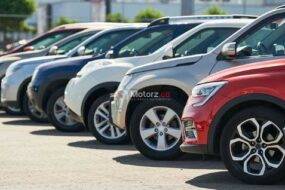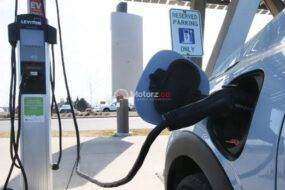The electric vehicle (EV) revolution is gaining momentum in Canada, and with it comes a growing network of charging stations. Whether you’re a seasoned EV owner or considering making the switch, understanding the ins and outs of charging is crucial. This comprehensive guide will equip you with the knowledge to confidently navigate the electric highway.
Understanding EV Charging Basics
Before diving into the world of charging stations, it’s essential to grasp the fundamentals of EV charging.
Types of EV Chargers
There are primarily three types of chargers:
Level 1 Chargers: These are the standard 120-volt outlets found in most homes. While convenient, they offer the slowest charging speed, making them suitable for overnight charging or topping up short distances.
Level 2 Chargers: Delivering 240 volts, Level 2 chargers are the most common choice for home charging. They provide significantly faster charging times, typically taking several hours to fully charge an EV.
DC Fast Chargers (Level 3): These are the high-powered chargers found at public stations. They can replenish an EV’s battery in minutes, making them ideal for long-distance travel.
Charging Connectors
To ensure compatibility, it’s important to understand the different charging connectors used in Canada:
CCS Combo (Combined Charging System): This is the most common connector for both AC and DC charging.
CHAdeMO: Primarily used for older EV models, it’s becoming less common.
Charging Your EV at Home
Home charging is often the most convenient and cost-effective way to fuel your electric vehicle.
Installing a Home Charger
Installing a Level 2 home charger is generally recommended for optimal charging efficiency. It requires a dedicated 240-volt outlet and professional installation. Many provinces offer incentives to offset the cost of installation.
Smart Charging
Take advantage of smart charging technology to optimize charging times and potentially save on electricity costs. Some chargers allow you to schedule charging during off-peak hours when electricity rates are lower.
Public Charging Stations: Your Road Trip Companion
While home charging is ideal for daily commutes, public charging stations are essential for longer journeys.
Finding Charging Stations
Several apps and online platforms can help you locate charging stations along your route. These tools provide information on charger types, availability, and pricing.
Charging Network Membership
Some charging networks require memberships or pay-per-use fees. Consider joining a network that offers widespread coverage and competitive rates.
Charging Etiquette
To ensure a smooth charging experience for everyone, follow these guidelines:
Respect charging time limits.
Unplug your vehicle promptly after charging is complete.
Be mindful of other EV drivers.
Maximizing Your EV’s Range
To extend your EV’s driving range between charges, consider these tips:
Drive efficiently: Avoid aggressive acceleration and braking.
Optimize tire pressure: Proper inflation improves energy efficiency.
Reduce weight: Remove unnecessary items from your vehicle.
Use climate control wisely: Minimize the use of heating or cooling.
The Future of EV Charging
The EV charging infrastructure is rapidly expanding in Canada, with new charging stations being installed regularly. Advancements in battery technology and charging speeds are also on the horizon.
Conclusion
Embracing electric vehicles is a step towards a cleaner and more sustainable future. By understanding EV charging options and best practices, you can maximize the benefits of owning an electric car. As the charging infrastructure continues to grow, driving an EV will become increasingly convenient and accessible for Canadians.





